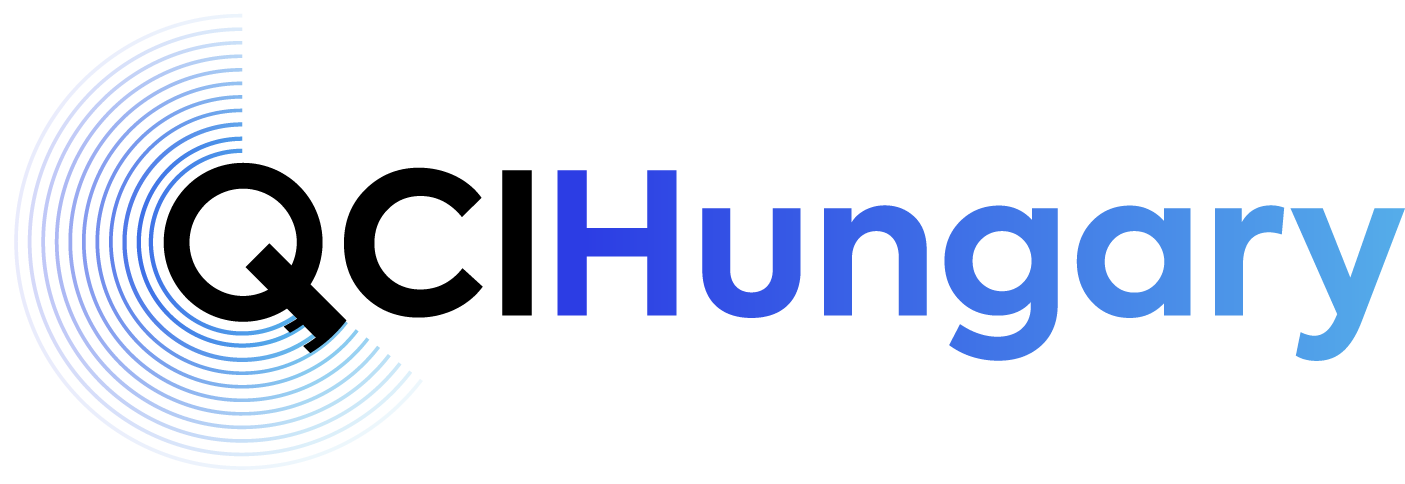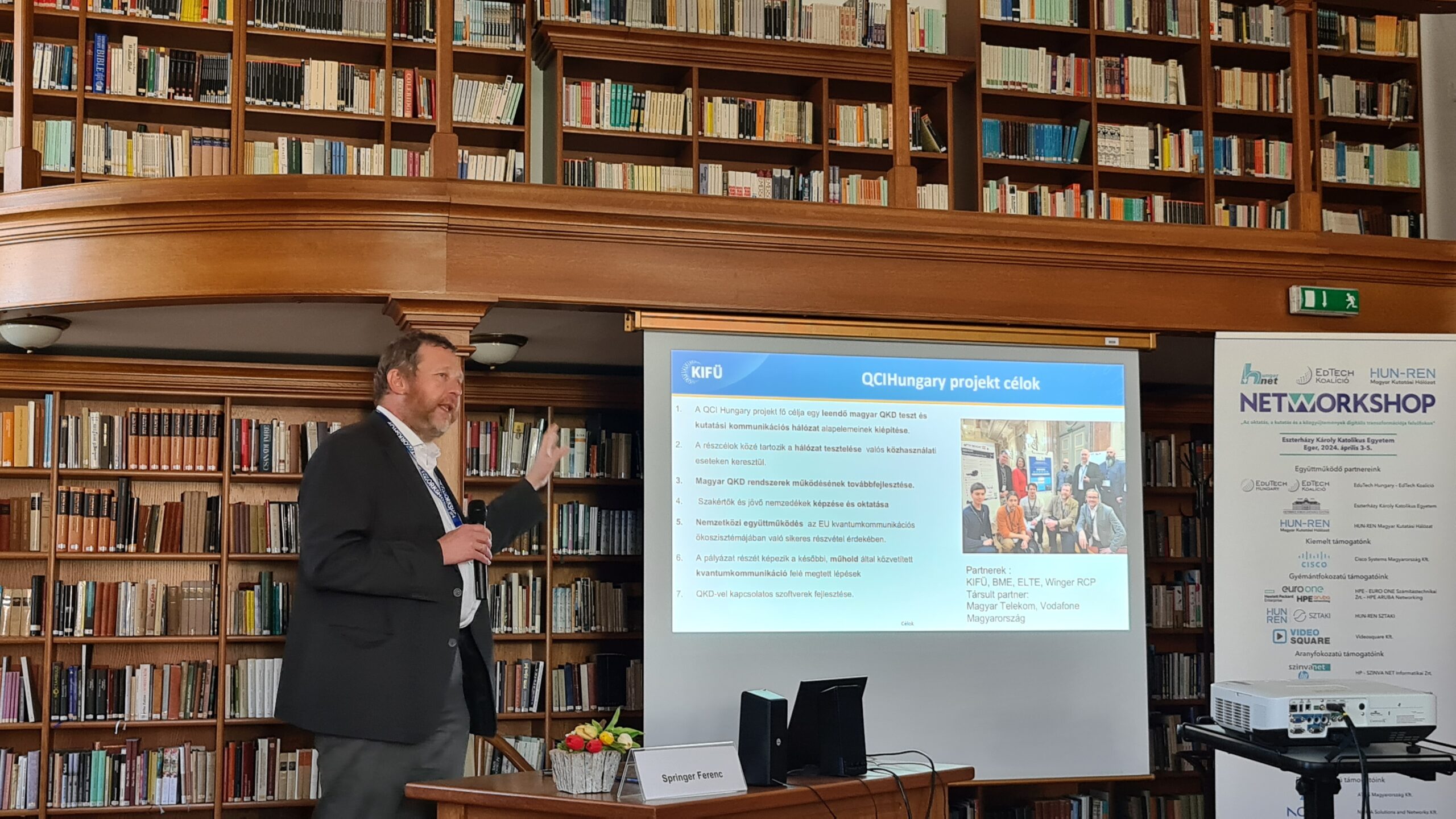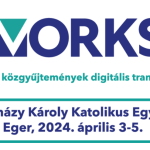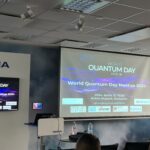The NETWORKSHOP conference, organised for the 33rd time this year, was held under the motto: “digital transformation of education, research and public collections at the cutting edge.” The event was hosted by the Eszterházy Károly Catholic University in Eger and indeed high quality presentations were given in all fields.
In addition to the pre-selected presentations on quantum computing and communication, a mini-workshop on the afternoon of the first day of the conference provided an opportunity to learn about current issues in the field.
At the Quantum Workshop János Mohácsi, coordinator of the QCIHungary project, first placed the topic in the context of EU cooperation. He listed the main programmes such as Quantum Flagship, Quantum Internet Alliance or EuroQCI in which the hungarian project participates together with several foreign research supporting infrastructures. Then the QCIHungary project and its objectives were briefly presented.
Tamás Máray from the Parallel and Distributed Systems Research Laboratory of HUN-REN-SZTAKI outlined the principles of quantum computing, its technological development and spoke in detail about the players in the quantum computing market and the EU’s quantum strategies. The audience also got a taste of the ongoing competition for “quantum first”.
Afterwards, Attila Farkas, also from SZTAKI, described a quantum reference architecture consisting of elements of the Jupyterlab and Apache Spark clusters.
Zoltán Peskó and Ádám Szilágyi, representing IBM Hungary, presented the company’s services related to quantum technology. These services range from the definition of use cases and problems, through the use of quantum algorithms, to the use of quantum computing capabilities. They also envisaged the roadmap of IBM in quantum computing.
Márton Czermann, representing the Department of Network Systems and Services of the Budapest University of Technology (BME), presented the role of BME in putting Hungary on the international map of quantum technologies. After an explanation of some key concepts of quantum communication, the technological challenges and possible solutions of quantum-based key distribution, BME’s achievements were discussed, including a quantum random number generator (QRNG) development, the first successful wired domestic quantum communication from 2022, and outdoor entanglement based QKD experiments, their results and future plans. The workshop ended with a lively discussion.
On Friday, before the closing plenary session, the library was packed for the last two presentations of Session 1, also on quantum topics.
János Mohácsi of KIFÜ gave a talk entitled “On the road to quantum informatics – Post quantum cryptography and the QCIHungary project”, which focused on the interesting research area of which encryption protocols might be successful after the proliferation of quantum computers, their deployment options, and what results can be reported so far.
In closing, Tamás Máray again presented the ongoing competition in the field of quantum technology, not missing the general introduction and international initiatives.
The quantum communication presentations of the QCIHungary project are available at …link.
In the final plenary session of the conference, both Zsolt Bánki (MNL) and Ernő Rigó (SZTAKI) emphasized in their speeches that the key to the success of NETWORKSHOP is its ability to innovate and its openness to new technologies. It can be said that together with other technologies the conference welcomed quantum computing and quantum communication topics with open arms.



